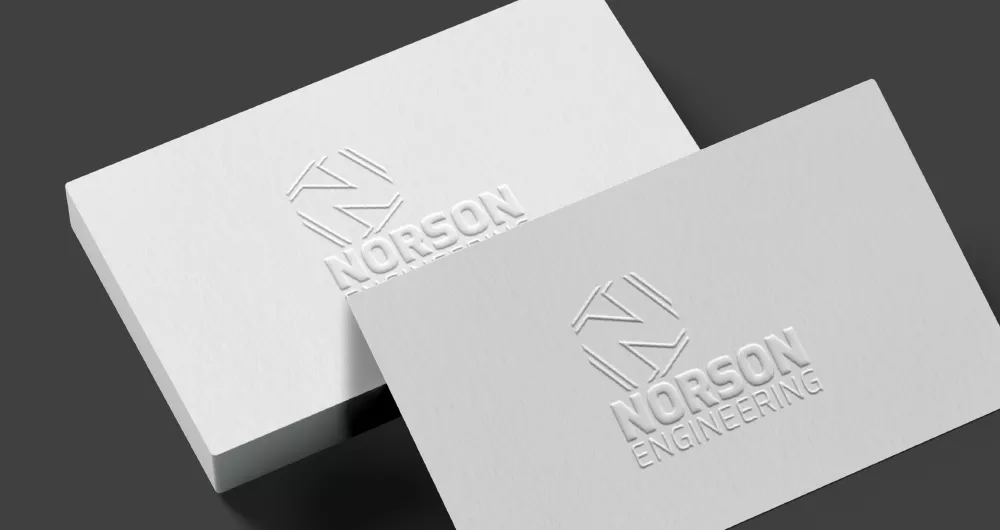Menu
Menu

Just because the ink has dried doesn’t mean you can’t bring some extra flair to your business stationery.
With a process known as finishing, you can add extra impact to printed products such as business cards, creating a long-standing impression amongst the people you meet. Some common finishing techniques for printing include embossing and debossing. Depending on the situation, each method has its own benefits for the overall design of the printed item. Fortunately, our team of printing experts can help you decide what best suits your needs.
Embossing is a technique that involves raising a pattern or image to create a 3D effect on the product. This is achieved by placing the material between two metal plates, known as dies, cut with the desired image. Using heat and pressure, a metal plate is then pressed into the paper from underneath, raising the image into the corresponding die. The resulting popped-up shape can then be inked or foiled for an additional effect.
The benefits of embossing your products include:
This makes embossing extremely popular for designing business cards. When embossing business cards, it is highly likely that a reverse image will also be created, producing a stronger impression no matter which way you look.
Debossing is the reverse of embossing and involves creating an indented image on the product. Like embossing, it usually involves pressing the material between two metal plates. However, the key difference is that the pattern is imprinted from the top rather than from underneath. This creates a sunken effect that can also be filled with ink or foiled for extra impact.
The benefits of debossing include:
The depth created by debossing means it is best suited for printing on materials such as leather or thicker business cards. If you want to add a splash of colour to your products, the depressed image can also act like a mould, reducing the chances that the ink spills onto other sections.
Our team of graphic designers will always consult with you to ensure that the finished product looks its best, but here are some extra points to consider before choosing to emboss or deboss your products.
If you are still unsure whether embossing or debossing is the right option for you, Worldwide also offers various other print finishing services. From spot UV to lamination and die cutting, we’ll help make the most of your printed pieces.
"*" indicates required fields